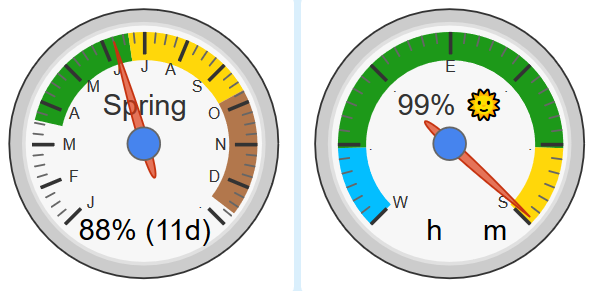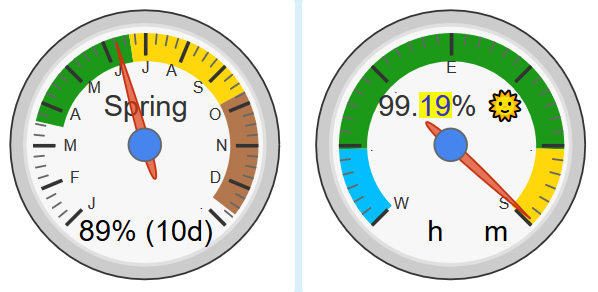I admit, I feel bad I have not uploaded a piston’s import code to draw those gauges… My complexity in that piston has reached a high level of personalization at this point, so I am unable to share it.
(For example: It pulls extra data from a private API, and references @globals that you do not have)
To share it here, I would have to copy it, and strip out 90% of the code first.
(would you guys even want this?)
I mean technically, it is only a single line of code to draw a gauge… Mine only got complicated because I wanted a different color for Spring / Fall. If you don’t care about that, it is literally just a single line of code referencing that @dayLengthPercent global.
In my defense, when I normally share pistons publicly, I try to do it after extensive testing, but before personalizing them to my household. (IE: You guys in the forums never see my final draft)
In this particular case, my gauge piston advanced too far before I was happy with it…
… and when I was happy with it, it was already too personal to share.







 .
.